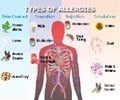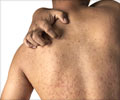Allergists examine 'webside manner' to improve access to top quality medical care and maximize the patient experience.

‘The American College of Allergy, Asthma and Immunology (ACAAI) provides guidance for practicing allergists on how they can provide efficient, effective care and be there for patients, even if they're not in the same room.’





Some allergists use facilitated visits for patients who don't have easy access to an allergist's office. Using a monitor with a camera and speaker, the facilitator (oftentimes a nurse) is in the room and connects a patient to a virtual stethoscope for heart and lung sounds, and takes blood pressure and heart rate readings. Recently, on-demand visits have become available, sort of like a same-day urgent care visit but in the digital age. No appointment is necessary. The patient can connect from a smartphone, tablet or computer and meet with an allergist in real time."The development of any technology program must focus on the user experience," says allergist Jay Portnoy, MD, ACAAI Fellow, and member of the panel. "The goal is to have an exceptional user experience--a patient's perceptions and responses that result from the use of a product or service. How that translates to health care is that there is a focus on making things easy to use, easy to grasp, easy to understand, and by putting the patient at the center of the experience. The nature of mobile and tech development is bringing the patient back into focus and putting them first again."
Drs. Portnoy and Elliott are part of an ACAAI workgroup that has developed a new position paper on the use of telemedicine for allergists, and Dr. Elliott was the lead author of the guidelines. The guidelines appear in the November issue of Annals of Allergy, Asthma and Immunology, the scientific journal of ACAAI. "Recent reports show there will be a shortage of 90,000 physicians in the U.S. by the year 2020, and 130,000 by the year 2025. Telemedicine offers us the opportunity to provide high quality care for patients who might not easily be able to reach our offices," says Dr. Elliott.
Telemedicine continues to grow and evolve with an increase in demand. The ACAAI position paper provides guidance for practicing allergists on how they can provide efficient, effective care and be there for patients, even if they're not in the same room.
Source-Eurekalert














